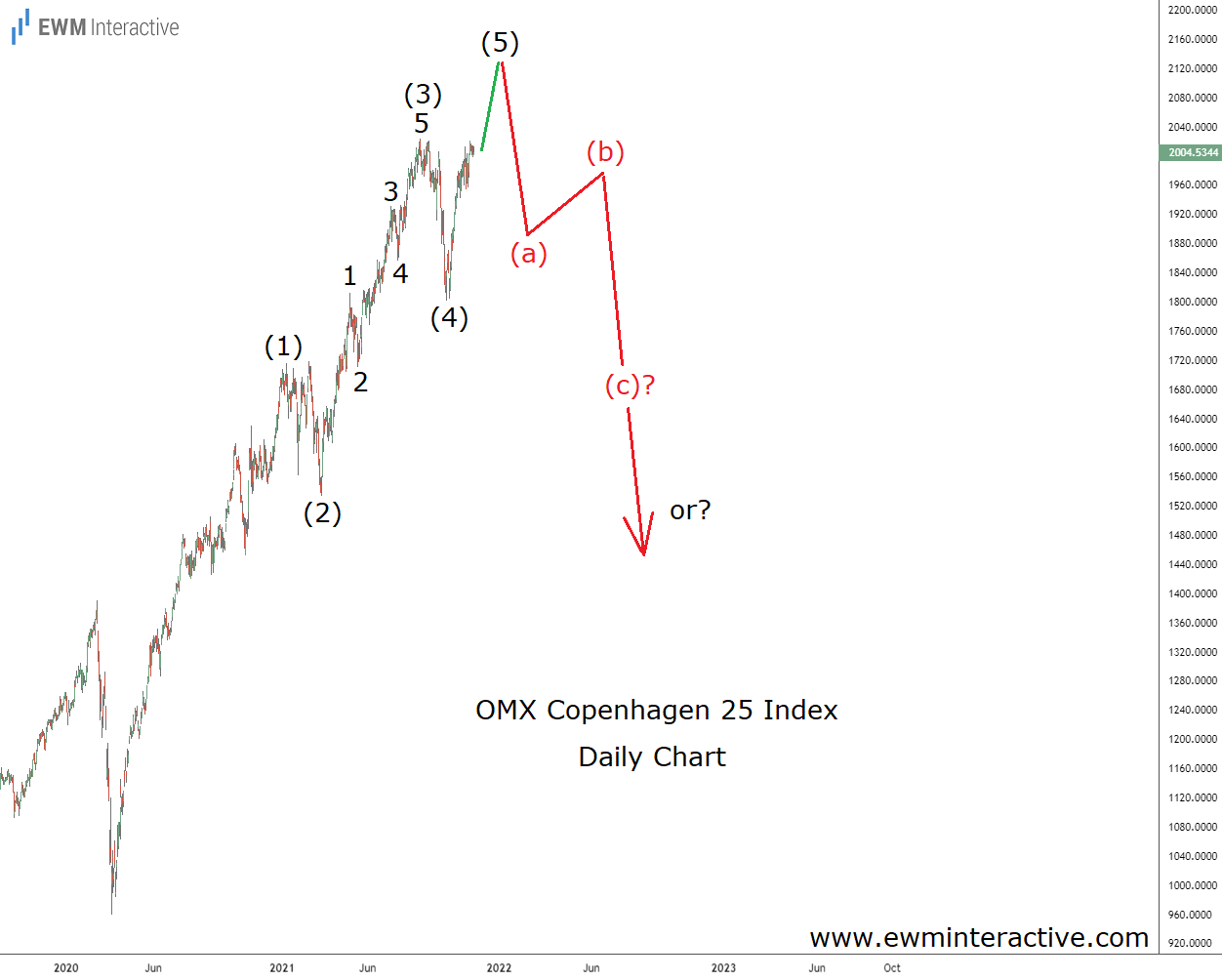OMX Copenhagen 25 is trading at all-time highs. Slightly above the 2000 mark now, the Danish benchmark is up nearly 20% YTD and 109% from its March 2020 bottom. It turns out that quality companies like Pandora (CSE:PNDORA) (OTC:PANDY), GN Store Nord (CSE:GN) (OTC:GNNDY) and Vestas Wind Systems (CSE:VWS) (OTC:VWDRY) can deliver some pretty good returns.
Besides, with the country’s GDP expected to add another 3.2% in 2022, there seems to be little Danish investors should worry about. However, we know from experience – and history – that one should be most cautious precisely when things look the rosiest.
With that in mind, we decided to take a look at the Elliott Wave structure of the post-Covid recovery in OMXC 25. What we found doesn’t look like a setup for a new bull market.

The daily chart reveals that the surge from the bottom at DKK 960 in March, 2020, has taken the shape of a five-wave impulse. The structure is labeled (1)-(2)-(3)-(4)-(5), where the five sub-waves of wave (3) are also visible. If this count is correct, we can expect wave (5) to reach a new record in the short run.
Unfortunately for the bulls though, the theory states that a three-wave correction follows every impulse. Once the fifth wave ends, it would make sense to prepare for a notable three-wave decline to at least DKK 1700. Assuming a bearish reversal at the midpoint between DKK 2100 and DKK 2200, this translates into 21% drop.
However, given Denmark’s market capitalization to GDP ratio of roughly 200%, one must not underestimate the possibility of an even bigger selloff. Trees don’t grow to the sky and no trend lasts forever. The time to take profits is before everyone else rushes for the exit.
Which stock should you buy in your very next trade?
AI computing powers are changing the stock market. Investing.com's ProPicks AI includes 6 winning stock portfolios chosen by our advanced AI. In 2024 alone, ProPicks AI identified 2 stocks that surged over 150%, 4 additional stocks that leaped over 30%, and 3 more that climbed over 25%. Which stock will be the next to soar?
Unlock ProPicks AI